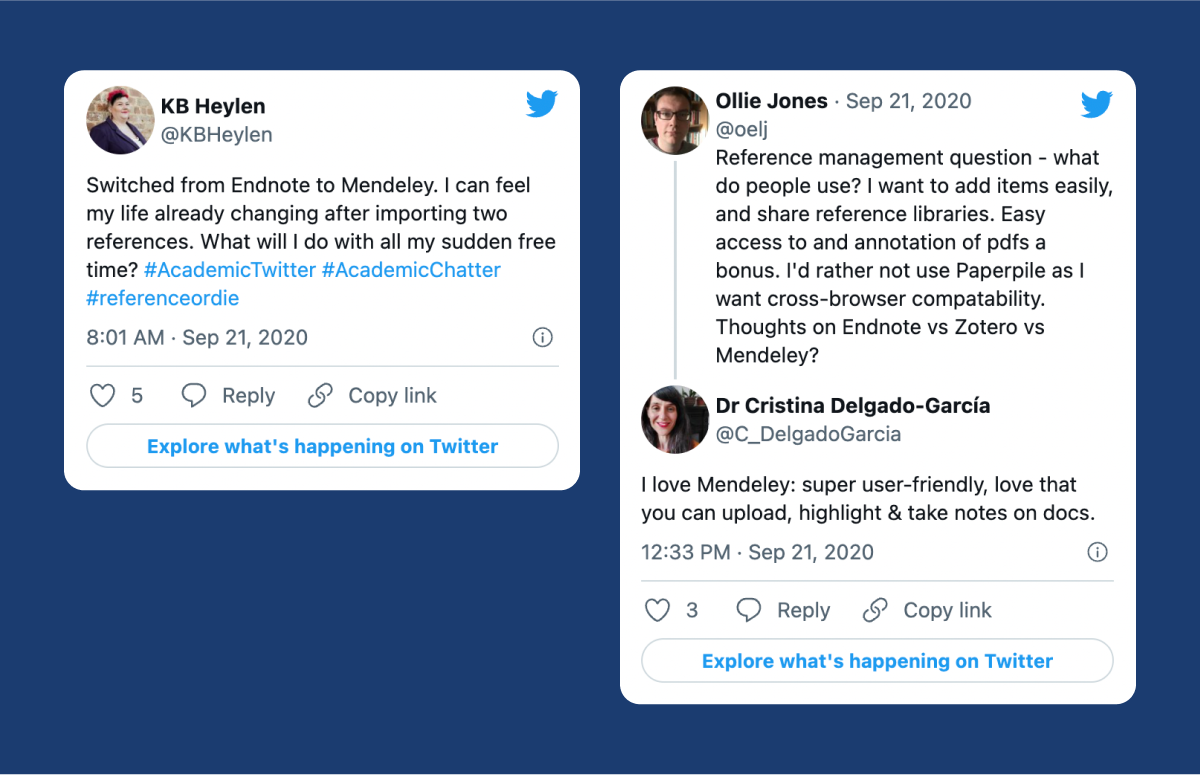UX & UI Design:
Mendeley (MRM)
Mendeley Reference Manager (MRM) is a reference management tool that helps researchers organise, store and analyse their research materials. The tool launched in beta during summer 2019 and has attracted more than 120,000 users.
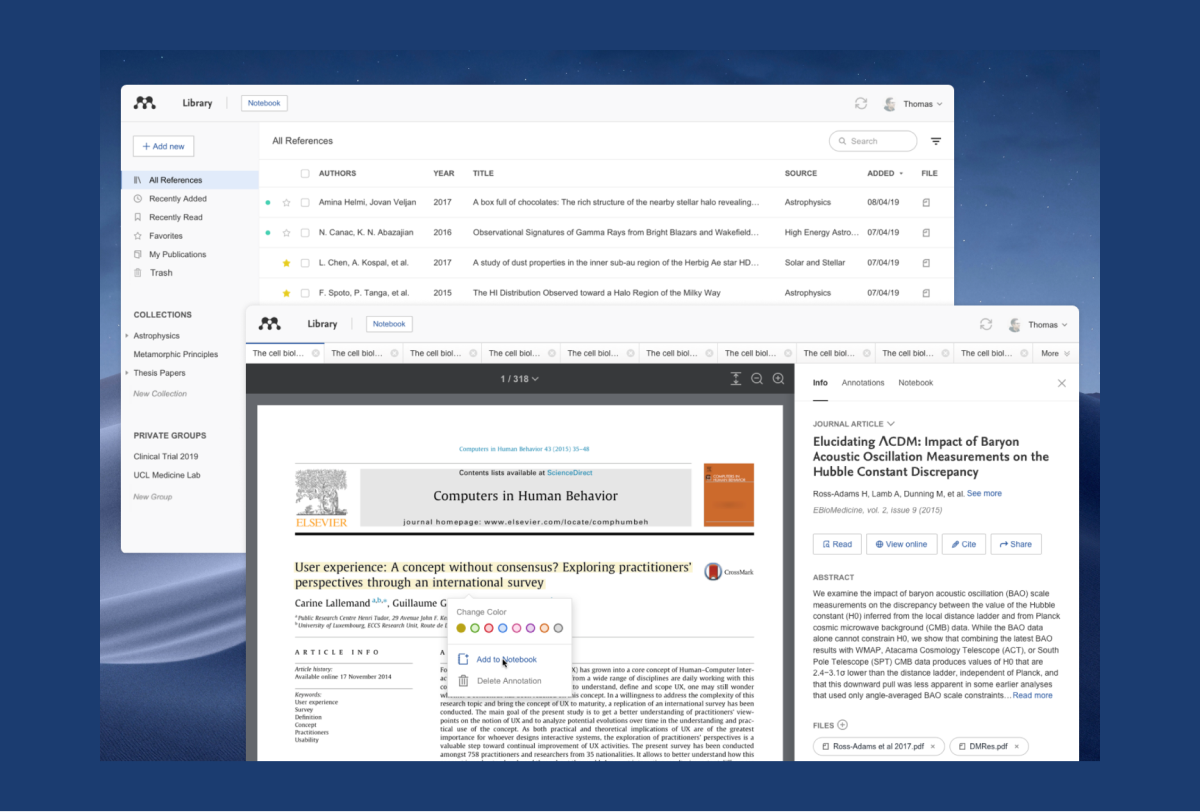
As a senior designer at Elsevier, I collaborated with an agile, cross-functional team of Product Owners, Business Analysts, and Developers to improve the Mendeley Reference Manager for the scientific research community, delivering solutions that balanced user needs with business objectives.
My responsibilities included leading design with a strong focus on user experience and usability, conducting user research, and crafting wireframes and prototypes aligned with modern design standards. Additionally, I mentored junior designers, ensuring our work consistently delivered effective, user-friendly outcomes that supported the needs of researchers worldwide.
Mendeley
(for Elsevier)
Tools
Skills
UX / UI Design · Design System · Responsive Web Design · Design Thinking · Cross-functional Collaboration · Research & Testing
project goals
Facilitate a smooth migration for existing users from Mendeley Desktop to Mendeley Reference Manager, ensuring uninterrupted work.
Enhance user satisfaction by integrating feedback to improve app features and create a more intuitive design for organising and analysing research materials.
Provide a consistent user experience across all platforms, both online and offline, regardless of the operating system.
Prioritise accessibility to ensure the tool is inclusive for all users, including those with disabilities.
Establish a continuous feedback loop with users to adapt to their evolving needs and preferences.
Aim to grow the user base beyond 120,000 while aligning development efforts with Elsevier's internal changes for improved product consistency.
user research
Mendeley had established a robust research program with previous usability testing data, providing valuable user feedback to guide our UI design decisions. Given the application's complexity and requirements, we maintained continuous research and testing throughout development.
planning, conducting, & documenting user sessions
Each quarter, we sent email invitations for users to participate in weekly interview sessions, which team members carefully curated. These sessions encompassed qualitative interviews, usability testing, and sometimes combined feedback sessions across multiple teams.
We hosted 7–10 users weekly in our office to gather feedback on features under development. Using Lookback, we tested prototypes and live-streamed interviews to all cross-functional team members.
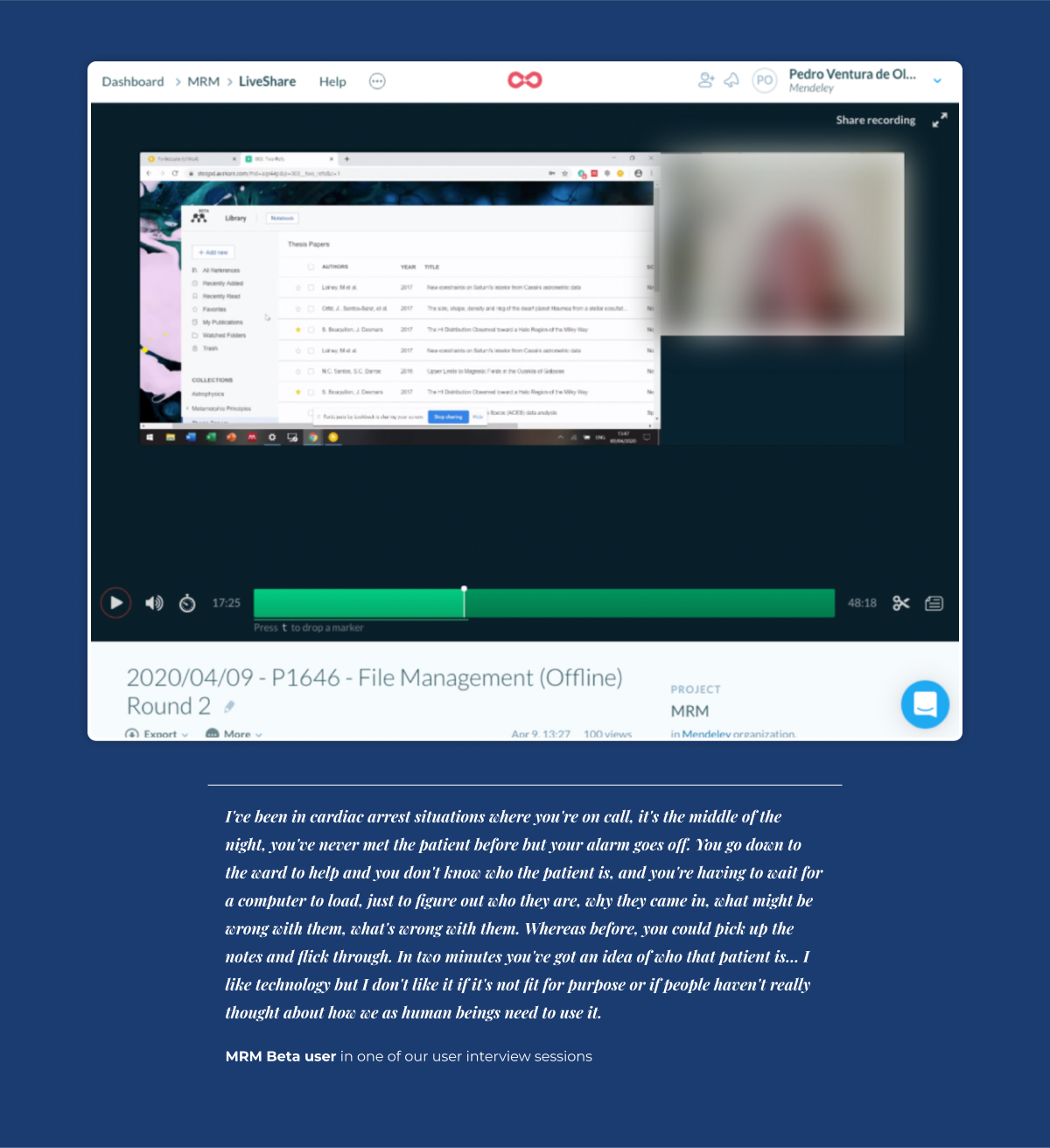
analysing, tagging, & sharing findings
All research was stored, tagged, and organised into a shared repository so that all team members could access new and previous research to understand user behaviour, identify patterns and make more informed decisions that help the project their working on.
We used primarily Confluence to store and organise research (left) and Dovetail to tag and quickly access research findings (right).
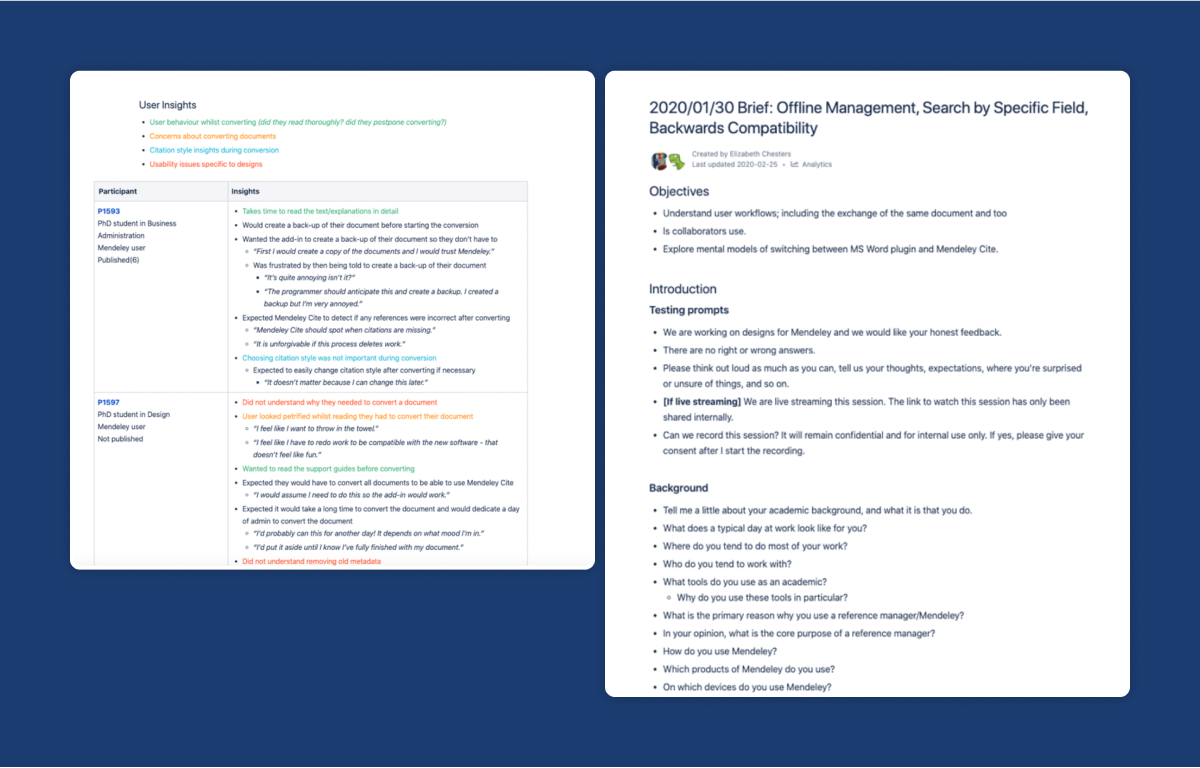
maintaining a design documentation
With ongoing research and design iterations, it became crucial to track changes and prevent scope creep.
We created detailed design documents in Confluence that described every part of the application and its functionality. Though challenging to create and maintain, this documentation helped coordinate our large team's efforts and provided a stable reference point. It ensured our product met real user needs and aligned with our project plans.
These documents also included guidelines for consistently applying new styles and components across the app, based on our UI Pattern Library work.
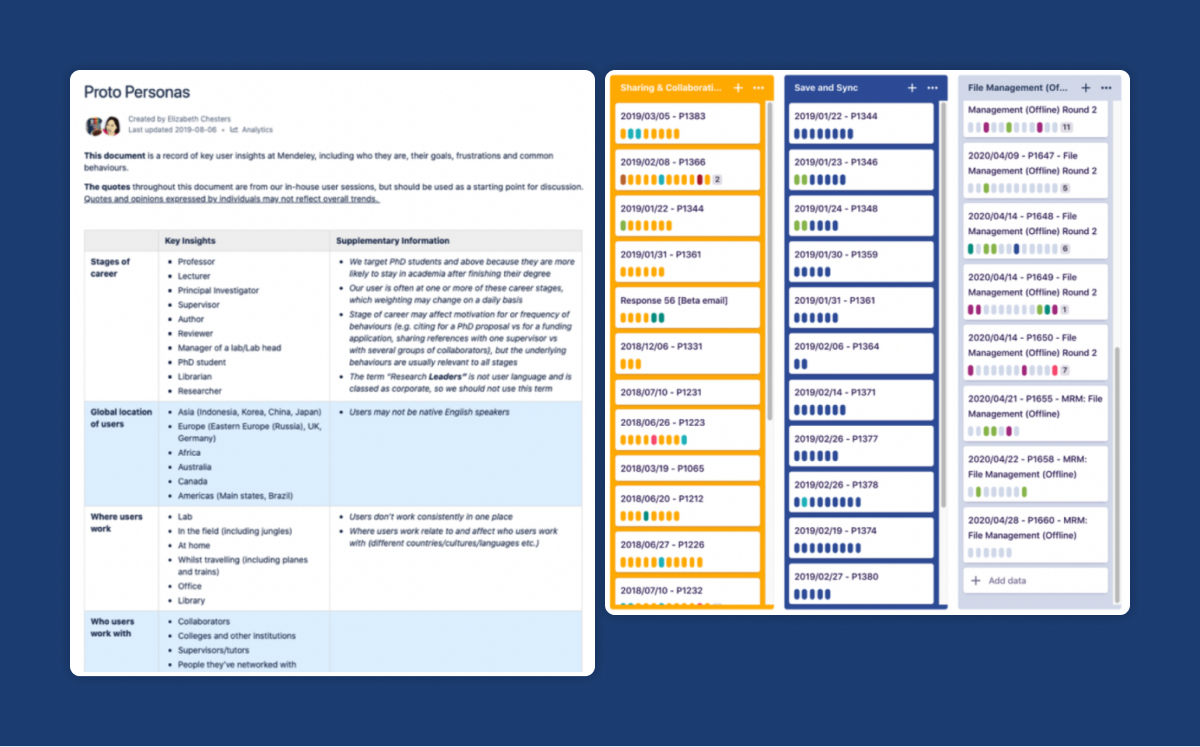
UI pattern library
During my time on the MRM design team, I was heavily involved in creating and implementing the Reference Manager UI Pattern Library that was proven highly valuable, making our application more cohesive, accessible, and visually appealing. This living document evolved as we refined our design approach, containing the core UI components that formed the foundation for MRM's redesign.
usage
The pattern library was considered the masterfile. All the components were created as symbols and linked to any working Sketch files for new UI flows and application design.
structure
Components - Symbols for specific components
Foundations - Component specifications and states, typography and text styles
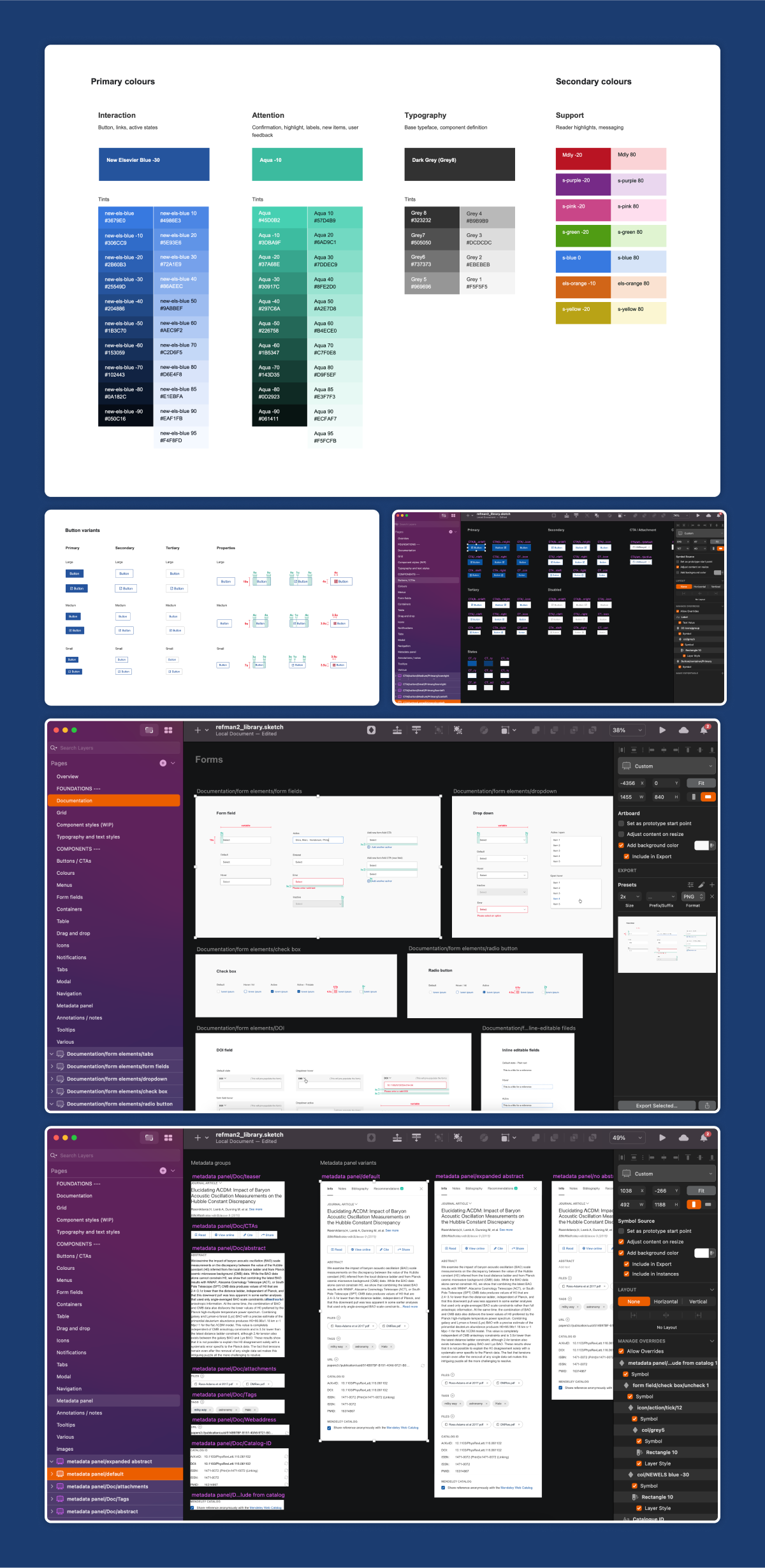
the MRM application
As we learned more about our users, we focused on creating polished, high-quality designs and interactions for our three main products. Through iteration and careful evaluation, we refined each version to deliver the best possible user experience.
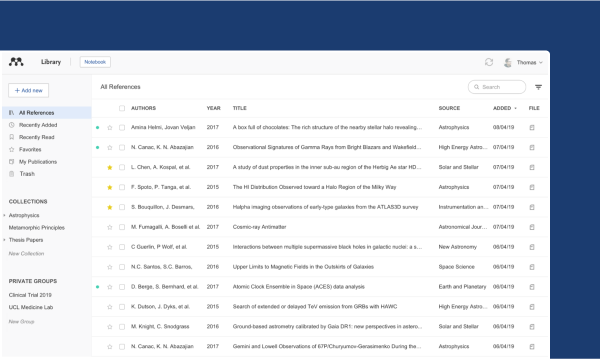
MRM library
For managing, editing, and organising references from just one library and enabling collaboration with other researchers by sharing references and ideas.
MRM reader
For reading, highlighting, and annotating PDFs, within the Reference Manager while reading papers. Keeping everything across multiple documents in one place.
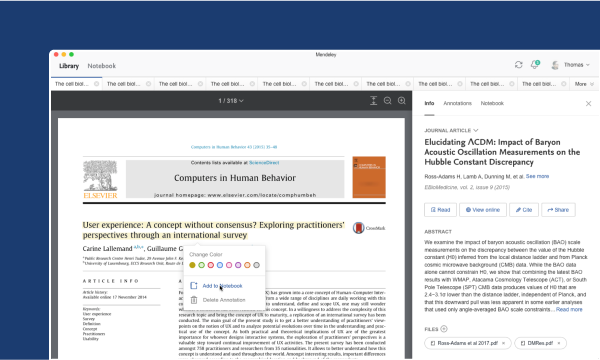
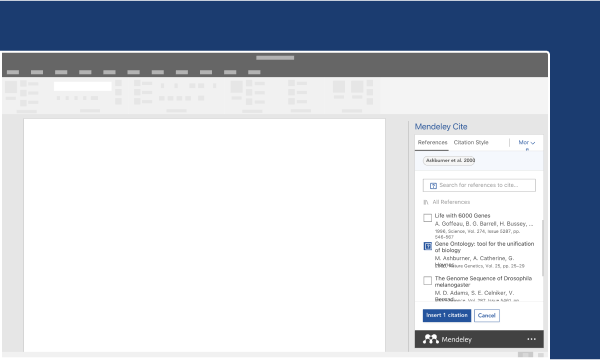
mendeley cite
For reading, highlighting, and annotating PDFs, within the Reference Manager while reading papers. Keeping everything across multiple documents in one place.
results so far
Today MRM has +120k
users while in beta. More than 1M references were created and +1M
annotations were created using the features in MRM.
(Stats as of Feb 2020)
